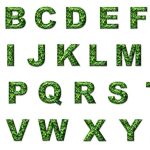A suffix is a specific group of letters at the end of a word. It often indicates part of the meaning of the whole word. Example: “less" = without If you know the most common suffixes, it will help to deduce the meaning of new words. Example: I had a sleepless night at the hotel. You already know the word "sleep" and now you know that the suffix "less" means … [Read more...] about English suffixes
Archives for 2017
English prefixes
A prefix is a group of letters at the beginning of a word. It indicates part of the meaning of the whole word. If you know the most common prefixes, it will help to deduce the meaning of new words. So even if you don't know a word, if you recognise its prefix and know the meaning of the prefix, it will help you guess the meaning of the whole word. Example: "dis" is a prefix … [Read more...] about English prefixes
Past simple tense in English
We use the past simple tense to describe an action in the past. Example: Yesterday, he walked to the train station. In the above example, "he walked" is the past simple tense. It describes an action from yesterday. Form affirmative I walkedyou walkedhe / she / it walkedwe walkedyou walkedthey walked Spelling rules for the past simple form Regular … [Read more...] about Past simple tense in English
The difference between TO and TOWARDS
Look at these 2 sentences: 1) Jane is walking to the library.2) Sarah is walking towards the library. to and towards are prepositions to describe movement. Both of these sentences are grammatically correct. But there is a slight difference in the meaning. In this lesson, you will learn the difference. towards Let's look at a sentence: Sarah is walking towards … [Read more...] about The difference between TO and TOWARDS
When to use capital letters in English
In English, most of the time, we write with lower case letters: List of small letters / lower case letters:a b c d e f g h i j k l m n o p q r s t u v w x y z We use capital letters for specific situations. List of capital letters / upper case letters:A B C D E F G H I J K L M N O P Q R S T U V W X Y Z In this lesson, you will learn the main rules for when to use … [Read more...] about When to use capital letters in English






